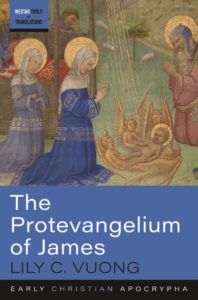Years in the Making: The Debut of NASSCAL’s Early Christian Apocrypha Series
The North American Society for the Study of Christian Apocryphal Literature (NASSCAL) is celebrating the release of the first two volumes in their Early Christian Apocrypha series: The Gospel of Pseudo-Matthew and the Nativity of Mary, by Brandon W. Hawk, and The Protevangelium of James, by Lily C. Vuong. To be clear, the two books are numbered volumes 7 and 8 because NASSCAL is continuing a series that was begun by Julian V. Hills, who edited six volumes of texts for Polebridge Press.
 The process of getting these two books to publication began in 2015. NASSCAL had been formed a year earlier and the directors were considering options for publishing projects that could be venues for the work of our members. The first volume of the More New Testament Apocrypha series was near completion, and though it is not explicitly a NASSCAL project, many of its contributors were NASSCAL members. MNTA focuses on texts that are not normally included in apocrypha collections, but we had members of the society interested in working on some of the “standard” apocryphal texts—such as the Gospel of Thomas and the Apocalypse of Peter. We looked at the work of the French and Swiss apocrypha group l’AELAC (Association pour l’Étude de la Littérature Apocryphe Chrétienne), who publish a series of pocket-size translations called La collection de poche apocryphes. But there already existed a North American pocketbook series of apocrypha in English.
The process of getting these two books to publication began in 2015. NASSCAL had been formed a year earlier and the directors were considering options for publishing projects that could be venues for the work of our members. The first volume of the More New Testament Apocrypha series was near completion, and though it is not explicitly a NASSCAL project, many of its contributors were NASSCAL members. MNTA focuses on texts that are not normally included in apocrypha collections, but we had members of the society interested in working on some of the “standard” apocryphal texts—such as the Gospel of Thomas and the Apocalypse of Peter. We looked at the work of the French and Swiss apocrypha group l’AELAC (Association pour l’Étude de la Littérature Apocryphe Chrétienne), who publish a series of pocket-size translations called La collection de poche apocryphes. But there already existed a North American pocketbook series of apocrypha in English.
Westar, the association behind the Jesus Seminar, have a number …
